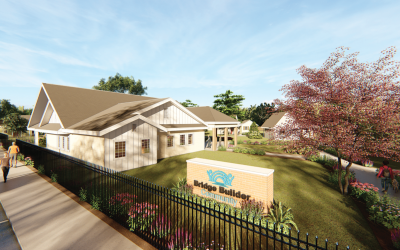If you live in the Augusta-Aiken area, your yard was once a piece of a forest. Your lawn and garden were the domain of the longleaf pine. That longleaf forest covered 90 million acres. It ran all the way from the sand hills to the sea, down to Florida, up to Virginia, and out to Texas. No roads cut through it, just Indian trails.
Augusta and Aiken stand at the western edge of that longleaf forest, at the fall line where the coastal plain gives way to the hilly Piedmont, and the longleaf pines give way to hardwoods.
You can still see remnants of that original longleaf forest in Aiken’s Hitchcock Woods and in areas of Fort Gordon and the Savannah River Site. But almost all of it is gone now along with the rich ecosystem it supported. Aside from isolated clumps of longleaf pines, only about 3 million acres of forest remain.
Through the writing of William Bartram we can glimpse what our area looked like when that virgin forest still stood. The naturalist-explorer was 33 years old when he came to Georgia. It was springtime in 1773, and the forest enchanted him:
“It was drawing on towards the close of day, the skies serene and calm, the air temperately cool, and gentle zephyrs breathing through the fragrant pines; the prospect around enchantingly varied and beautiful; endless green savannas, checquered with coppices of fragrant shrubs, filled the air with the richest perfume. The gaily attired plants which enamelled the green had begun to imbibe the pearly dew of evening; nature seemed silent, and nothing appeared to ruffle the happy moments of evening contemplation…”
He traveled up to Augusta to witness the congress between the settlers and the Creeks and Cherokees here in May 1773:
“The village of Augusta is situated on a rich and fertile plain, on the Savanna river; the buildings are near its banks, and extend nearly two miles up to the cataracts, or falls, which are formed by the first chain of rocky hills, through which this famous river forces itself, as if impatient to repose on the extensive plain before it invades the ocean. When the river is low, which is during the summer months, the cataracts are four or five feet in height across the river, and the waters continue rapid and broken, rushing over rocks five miles higher up: this river is near five hundred yards broad at Augusta.”
He found it a beautiful place:
“It was now about the middle of the month of May; vegetation, in perfection, appeared with all her attractive charms, breathing fragrance every where; the atmosphere was now animated with the efficient principle of vegetative life; the arbustive hills, gay lawns, and green meadows, which on every side invest the villa of Augusta, had already received my frequent visits…“
But having an insatiable curiosity to explore more of Georgia, he joined a surveying party and left Augusta for the newly-ceded Indian territories west of the town.
Augusta was just a village in the fragrant longleaf forest then. The forest Bartram described looked nothing like the Georgia and South Carolina forests we see today, crowded with tangles of saplings, fallen limbs, vines, and undergrowth. The longleaf forest was more like a grassy prairie with trees widely scattered across it, says Bob McCartney of Woodlanders Nursery in Aiken. McCartney, who came to Aiken from Colonial Williamsburg, is an expert on native plants and the longleaf forest. That grassland forest was open, airy, bright, and fragrant with the scent of pine and wildflowers. Sunlight filtered through the pine needles overhead. Settlers reported they could drive a horse and wagon through the woods in any direction. In fact it was said that in those days you could ride a horse right through the forest from Virginia to Florida without a limb knocking your hat off.
What kept the forest so open was fire. Smokey the Bear’s warnings to the contrary, fire was the longleaf’s best friend. In fact, the longleaf forest can’t exist without periodic fires burning across the forest floor. In their natural state, longleaf forests burned every two or three years. Lightning strikes would set dry undergrowth ablaze, burning the pine needles and debris away without damaging either the mature trees or the longleaf seedlings, which were adapted to survive these periodic blazes. Because these fires occurred every few years, little fuel accumulated on the forest floor, and fires didn’t burn much more than knee-high.
“Those fires kept the forest open,” said McCartney. “Fire kept the ground cover in grasses and herbaceous plants instead of underbrush. The cycle was going on for thousands of years, so native plants and wildlife adapted to that regime.”
If lightning failed to do its work, the Indians would set fires themselves to open up the forest for new grasses and wildlife. In a healthy longleaf forest, the trees’ trunks are all blackened from the ground up to about three or four feet from those life-giving fires. With undergrowth cleared away, seeds from the pines could reach the ground, where sunlight, unblocked by competing plants, would help them germinate in the rich ash and put down deep taproots.
Early settlers thought the longleaf pine forest was more or less infinite. They cut the trees down to build their cabins and clear land for vegetable gardens, tobacco and cotton fields. Longleaf pines grew strong and straight, made fine masts and keels, so they were harvested for ship-building (the keel of the U. S. S. Constitution was made from a single longleaf pine log). They cut the trees down for lumber, cleared tracts for housing developments. By the early 20th century, the forest was virtually gone.
And it’s not easy to re-establish a longleaf forest. You can’t just plant a bunch of longleaf pines—you need fire. With urban areas encroaching on forestland, the periodic controlled burns that the forest requires are much more problematic. People instinctively think of fire as destructive, and smoke from the burns can create respiratory problems downwind. Enter Smokey and his reminder that “Only YOU can prevent forest fires!” But McCartney explains, “Once fires were suppressed, the understory became underbrush and pines ceased to reproduce because seeds fell on the undergrowth and litter instead of the ground.” In time, scrub oaks and shrubs replaced the pines. A healthy longleaf forest requires prescribed burns “to mimic the conditions that were natural,” he said. However, when those prescribed burns occur at Fort Gordon or the Hitchcock Woods, 911 lines light up with questions and complaints from residents about the irritating smoke.
For all these reasons, most of the pine forests you see today are of fast-growing loblolly and slash pines, which require no fire, growing in straight man-made rows for efficient harvesting.
The original ecosystem of the longleaf forest will never return, but many attempts are underway to preserve what is left and re-establish some of what has been lost. Because the longleaf forest is the ideal habitat for bobwhite quail, thousands of acres of longleaf pines have been planted and maintained as quail plantations in Georgia. The red-cockaded woodpecker can survive only in old-growth fire-dependent pine savannahs. The only hope for preserving the remnant population of this endangered species is in longleaf forests. Other species that thrive in longleaf forests include gopher tortoises, eastern wild turkeys, pine and prairie warblers, Bachman’s sparrows, eastern indigo snakes, striped newts, pinewoods treefrogs, and white-tailed deer. In fact, 29 threatened or endangered species live in the longleaf forests.
Today the sawgrass-longleaf forest is the third rarest ecosystem in the United States. Only one-tenth of one percent of old growth forest remains. The largest existing stands in Georgia are managed at Fort Stewart and in private quail plantations near Thomasville. Florida’s Eglin Air Force Base has the largest remaining virgin longleaf forest, about 5,000 acres. Restoration of this ecosystem in Georgia is largely in private hands, since 22 million of Georgia’s 24 million acres of forestland are in private hands. Federal and state agencies offer initiatives to landowners to convert their forestland to longleaf, and many in Georgia and South Carolina have done so. The Nature Conservancy and the Longleaf Alliance also offer financial and other practical incentives to landowners.
Someday it may be possible to experience again what Janisse Ray describes in her prizewinning memoir, Ecology of a Cracker Childhood: “longleaf as far in any direction as you could see. In a longleaf forest, miles of trees forever fade into a brilliant salmon sunset and reappear the next dawn as a battalion marching out of the fog. The tip of each needle carries a single drop of silver. The trees are so well-spaced that their limbs seldom touch and sunlight streams between and within them. Below their flattened branches, grasses arch their tall, richly dun heads with seeds, and orchids and lilies paint the ground orange and scarlet… Our eyes seek the flowers like they seek the flashes of birds and the careful crossings of forest animals.”
Until that day, a visit to Aiken’s beautiful Hitchcock Woods, preserved and managed by a private foundation, offers a 2,000-acre glimpse of what was here long before we were.
Article appears in the May 2018 issue of Augusta Magazine.






